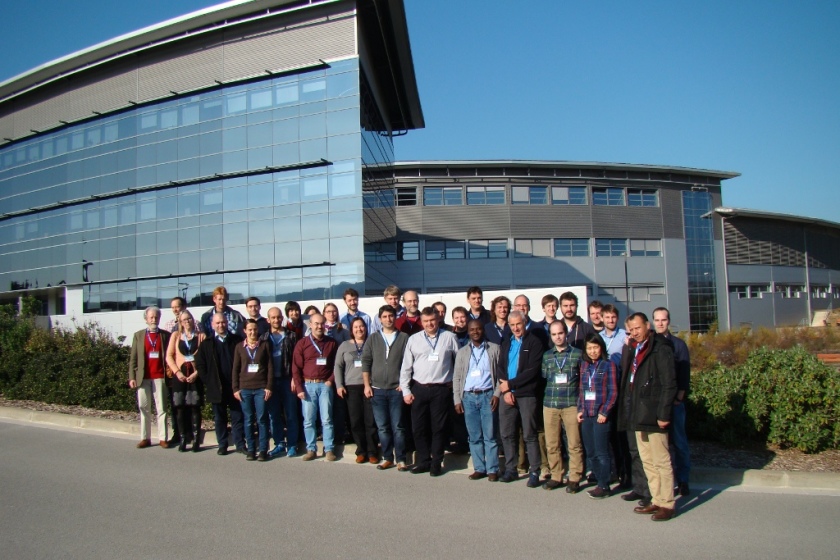Common platform for macromolecular crystallography at European synchrotrons

MXcuBE Meeting from 1st - 2nd of December 2015 at Alba, Barcelona. The meetings make sure that the devenlopment of MXcuBE3 closly fits to the needs of the users.
Photo: Jordi Juanhuix/ALBA
Researchers use high-intensity X-ray light from synchrotron radiation sources to decipher the structures of biological molecules and thus the blueprints of life. A cooperation agreement has been effective since 2012 to establish common software standards at several European sources. Its aim: The eight synchrotrons involved want to create user-friendly, standardised conditions at the 30 experimental stations for macromolecular crystallography, which will greatly facilitate the work of research groups. In the new project “MXCuBE3”, the existing software platform is being adapted to include the latest developments in technology.
Many of the beamlines for macromolecular crystallography have been extensively modernised at various synchrotrons over the past few years. With new equipment, such as the latest high-resolution detectors, this opens up all new possibilities for experimentation. The common software platform MXCuBE2 now has to be adapted as well to keep up with this trend. The Curatorship has accordingly called for a new, overhauled version to be developed. The software solution MXCuBE3 will allow users to control their experiments via web applications. The upgrade will also guarantee MXCuBE3 will continue to run on computers with future operating systems, and will improve the connection to the sample database ISPyB.
Involved in the cooperation are the Helmholtz-Zentrum Berlin, the ESRF, the European Molecular Biology Laboratory, Global Phasing Limited, MAX-VI-Lab in Sweden, SOLEIL in France, ALBA in Spain and DESY.
Read up on this in more detail in the ESRF magazine
(sz)
https://www.helmholtz-berlin.de/pubbin/news_seite?nid=14380;sprache=en
- Copy link
-
BESSY II: Heterostructures for Spintronics
Spintronic devices work with spin textures caused by quantum-physical interactions. A Spanish-German collaboration has now studied graphene-cobalt-iridium heterostructures at BESSY II. The results show how two desired quantum-physical effects reinforce each other in these heterostructures. This could lead to new spintronic devices based on these materials.
-
Green hydrogen: MXenes shows talent as catalyst for oxygen evolution
The MXene class of materials has many talents. An international team led by HZB chemist Michelle Browne has now demonstrated that MXenes, properly functionalised, are excellent catalysts for the oxygen evolution reaction in electrolytic water splitting. They are more stable and efficient than the best metal oxide catalysts currently available. The team is now extensively characterising these MXene catalysts for water splitting at the Berlin X-ray source BESSY II and Soleil Synchrotron in France.
-
SpinMagIC: 'EPR on a chip' ensures quality of olive oil and beer
The first sign of spoilage in many food products is the formation of free radicals, which reduces the shelf-life and the overall quality of the food. Until now, the detection of these molecules has been very costly for the food companies. Researchers at HZB and the University of Stuttgart have developed a portable, small and inexpensive 'EPR on a chip' sensor that can detect free radicals even at very low concentrations. They are now working to set up a spin-off company, supported by the EXIST research transfer programme of the German Federal Ministry of Economics and Climate Protection. The EPRoC sensor will initially be used in the production of olive oil and beer to ensure the quality of these products.
